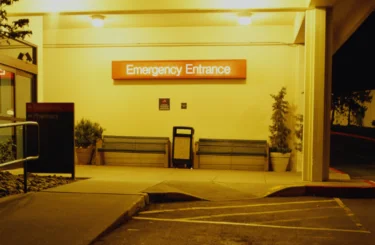
Are State Medical Boards Doing Enough to Protect Patients?
All too often, medical professionals make mistakes that cause severe injury or death. State laws regulate medical practice, and state medical boards are responsible for making sure doctors maintain certain standards. But are medical boards protecting patients from medical negligence?
What Are State Medical Boards?
A state medical board is a government entity that regulates the licensure and practice of medical professionals in each state. Across the U.S., its territories, and the District of Columbia, there are 71 medical boards.
The role of a state medical board is to protect the public by:
- Making sure doctors meet specific educational and training requirements.
- Investigating complaints about physicians.
- Taking disciplinary action when necessary.
Medical boards have the power to keep dangerous doctors from harming unsuspecting patients. As a recent CBS News report revealed, they rarely use that authority to protect the public from medical negligence:
Who Serves on Medical Boards?
The medical boards in most states are made up primarily of doctors. While doctors provide a level of expertise that helps evaluate the credentials and conduct of other physicians, they are also more likely to want to shield other professionals from disciplinary action.
Lack of consistency in medical board discipline from state to state likely means some state medical boards simply look the other way or fail to seek information that would better protect patients.
How Do Medical Boards Regulate Doctor Misconduct?
State medical boards investigate complaints or reports about a doctor’s competence or professionalism made by patients, other medical boards, hospitals, or government agencies.
A state medical board generally has the authority to issue disciplinary actions against physicians, including fines, suspension or revocation of license, or probation.
How Does the Failure of Medical Boards to Discipline Doctors Harm the Public?
When medical boards fail to discipline doctors for misconduct or fail to collect critical information — such as malpractice complaints or payouts —the public suffers. Not only is important information hidden from the public, but doctors who commit medical negligence are also allowed to continue practicing medicine without penalty.
The U.S. Department of Health and Human Services provides a National Practitioner Data Bank (NPDB) that provides information about medical malpractice and adverse actions taken by hospitals, but it does not provide details about individual physicians to the public. According to the Health Resources and Service Administration, medical boards rarely consult the NPDB.
State Medical Boards Fail to Prevent Medical Malpractice
Doctors who harm patients are often allowed to operate under the radar or discipline of state medical boards. Between 1990 and 2019, the majority (76 percent) of over 8,000 doctors with five or more malpractice payouts were never disciplined by their state’s medical board. As Public Citizen reports, thousands of physicians lost clinical privileges for decades due to misconduct but were not disciplined by their state’s medical board.
Doctors who have been banned from hospitals, have made multiple malpractice payments, and sometimes have even had their license revoked in another state have successfully moved to other states to practice medicine due to the failure of the state medical boards to conduct proper investigations. This according to the Milwaukee Journal Sentinel.
One study found that doctors with five or more malpractice claims are twice as likely to switch to a smaller or solo practice than doctors without malpractice claims.
The danger to patients is undeniable. A study by Johns Hopkins Medicine suggests that medical errors cause nearly a quarter of a million deaths every year — making medical mistakes the third leading cause of death in the United States.
According to the NPDB, between 2012 and 2021 in Michigan, there were:
- 18,383 adverse action reports in Michigan.
- 3,345 reports of medical malpractice payments.
- Over $674 million in medical malpractice payouts.
While medical negligence lawsuits provide an avenue to compensate victims injured by medical errors, more than half of the states in the U.S. have caps on medical malpractice awards.
If you or a loved one has suffered from a medical error, contact us today to evaluate your case and help you understand your legal options.
Robert B. Sickels
For more than 30 years, Robert Sickels has successfully represented plaintiffs involved in complex personal injury, medical negligence, and products liability matters.





